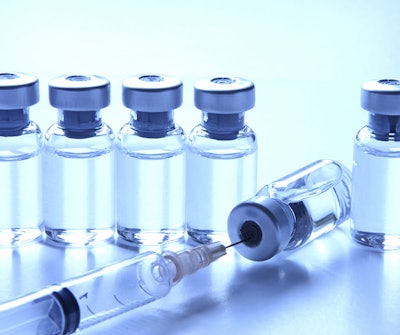
Poultry vaccination plays a critical role in protecting the bird against pathogens, illness and diseases, but effectiveness depends on proper administration and management.
“The point of vaccinating our birds is to stimulate the immune system against specific pathogens that we’re vaccinating for so that it can respond appropriately later in the chicken’s life,” Brian Jordan, Ph.D., associate professor, Departments of Population Health and Poultry Science at the University of Georgia said during the 2022 Georgia Precision Poultry Farming Conference.
“What we’re doing is stimulating the immune system so that it can develop the cells that the bird is then going to need to fight off that pathogen if it ever sees it again.”
The three types of commercial poultry vaccines
There are three main types of commercial vaccines for poultry: live, killed and recombinant.
Most live vaccines are attenuated, although some – notably coccidiosis – are not. These vaccines are designed to actively replicate and stimulate the immune system in a primary manner.
Killed vaccines, as the name suggests, are not alive and are not replication competent. These are typically used after the administration of a live vaccine as a reminder of what pathogen to target.
Jordan called recombinant vaccines “the precision vaccine.” They are live vaccines that code for several antigens of several different diseases, providing protection against several pathogens in one.
Different routes of poultry vaccine administration
In addition to the three types of commercial vaccines, Jordan also highlighted three different routes of vaccine administration for poultry.
In-ovo: In-ovo vaccines are administrated at the hatchery directly into the eggs.
Pros: This vaccine technology is designed to deliver vaccines directly into the embryo at transferred and are best for vaccines that can’t (or don’t need to be) mass applied. In-ovo vaccines are mostly used for recombinant vaccines, but some live vaccines can also be administered.
Cons: Some hatchability/safety concerns when it comes to administering live vaccines. In-ovo vaccination technology can be difficult to keep clean and mechanically functional, especially when it comes to the cups, sheaths and needles.
Spray/gel: These vaccines are administered at day-of-hatch or given in the field to boost the efficacy of a previously given vaccine.
Pros: Most common method of mass application in the hatchery and has been used for decades.
Cons: Efficacy of spray/gel vaccines is directly influenced by hatchery personnel, so training is key. Requires larger droplets, which means larger flow rate nozzles. The syringes are the biggest pinch point in the systems so users must ensure that thee pressure is appropriate and the stroke is smooth.
Injection: Killed vaccines must be manually injected into each bird. These are typically given to older or longer-lived birds, such as breeders or layers, although it is sometimes administered at the hatchery as well in some parts of the world.
Pros: Effective strategy to boost the antibodies of older birds, such as layers or breeders. Advances in tecnology for this type of vaccination is likely to come soon.
Cons: Highly manual process that has been replaced in the hatchery with in-ovo vaccination for most of the world. Requires an experienced vaccine crew. Cleanliness of the needles and tubing is critical. Injection site infections are common is cleanliness is not a priority.
















